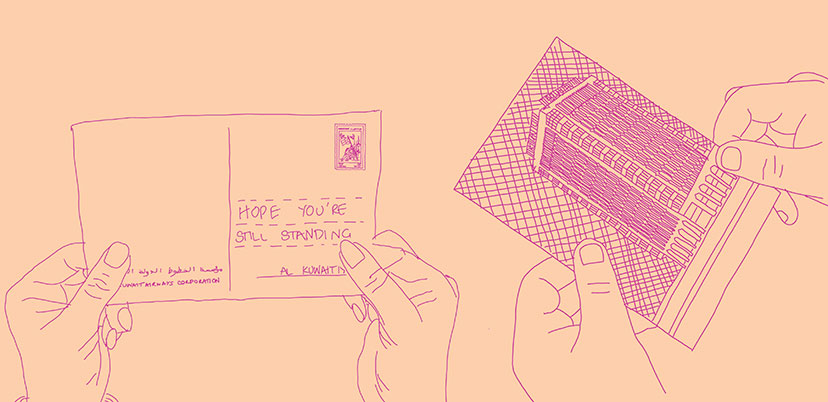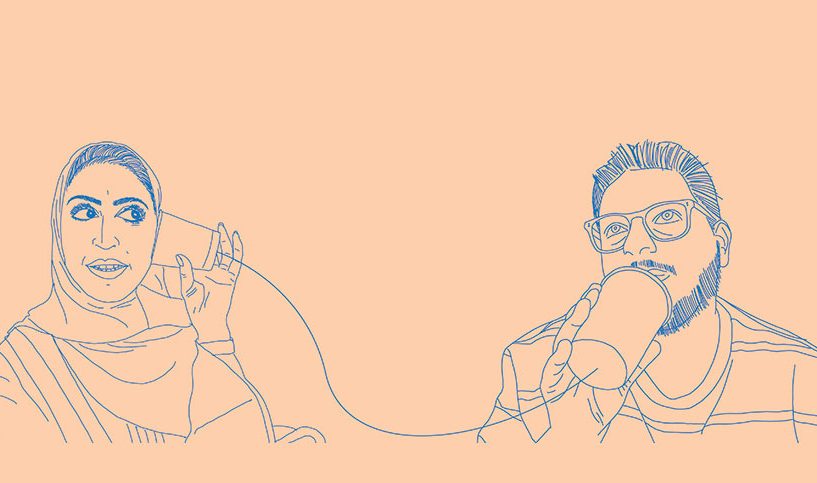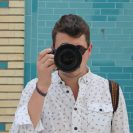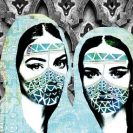At Nuqat’s upcoming 10-day regional conference in November, Mishari Al Najjar and Sara Abdulla are taking a literal approach to this year’s theme, ‘State of the Elastic Mind: A New Mindset for Old Barriers’ by stretching the workshop’s planned thought process from Kuwait all the way to Bahrain!
Spread across five days and titled ‘AlKuwaitiya and AlKuwaiti: A tale of two buildings’, the workshop by the platform IN NARRATIVE aims to examine the ongoing trend of the post-oil era structure demolition. A subject that is very near and dear to locals in Kuwait, especially when considering the rapid rate in which Kuwait’s urban landscape is changing, Mishari and Sara will consider the Kuwait Airways building as a local case study, and along with the participants, will exchange their reactions to the demolition as well as observe the building’s site and current condition. The main outcome of the workshop will be a series of dialogues communicated with the Bahrain workshop, where a different structure will be examined in response. They will share stories of the fallen structure and what became of it as a warning or foreshadowing to Bahrain’s building. The workshop will aim to explore the context in which the building existed in its full glory. It will also explore the building in present time, pre and post demolition.
Mishari AlNajjar is a practicing architect in Babnimnim Design Studio. Graduating from the American University of Sharjah with a Bachelor’s degree in architecture and a minor in urban design, his work stresses a multidisciplinary approach. His current work is built on observing human behavior and addressing it in a narrative method, merging the realms of storytelling and architecture. Sara Abdulla is the Co-Founder of Dust for Experience Design, a creative design studio that specializes in injecting soul into spaces, concepts, brands and products through Experience Design, Event curation and creating a platform for alternative spaces and ideas. With a Bachelor’s degree in architecture and project management from the University of Manchester, Sara actively engages in promoting architecture as an inclusive discipline through creating collaborative spaces, designing experiences, workshops and events.
Arriving as a passion project for both Mishari and Sara, and in our minds, as an elastic response to rapidly changing architectural practices, the multidisciplinary platform IN NARRATIVE encourages a multifaceted discourse that aims to broaden the reach of architecture to other aspects of life. Based on architectural observation, IN NARRATIVE is a collaborative attempt at fostering a greater understanding of the urban fabric of our cities, and this is best experienced by bridging the divide which keep the public from interacting with the architects responsible for shaping our urban landscapes. IN NARRATIVE engages public opinion through exhibitions, workshops and research. In doing so, IN NARRATIVE successfully humanizes the structures that surround us by utilizing the power of storytelling.
Have you faced any structural, social or personal barriers in your personal or professional journey? If so, what were they?
Mishari: Being a passion project, IN Narrative is the culmination of both my and Sara’s reaction to the design world we live in. We created IN Narrative to be a platform that aims to break the barriers usually placed between designers and the general public, between architects and users. The only way we knew how to break this barrier is through storytelling.
Sara: I left a full-time job as an architect at a real estate development company in Bahrain to start my own studio. One can only imagine all the things that may arise from leaving a full-time stable job to starting up independently, my favorite is that awkward pause with a delightful smile that comes after you say “I left my job to start my own studio”. Nonetheless, starting projects out of passion such as In Narrative, really does overcome these barriers because we got to tap into so many interesting realms of creativity.
What can participants expect to learn in your workshop?
Mishari: We will be hosting two simultaneous workshops, one in Kuwait led by me while the other is in Bahrain and will be led by Sara. In Kuwait’s workshop, participants will take the demolished Kuwait Airways Tower as a case study, they’ll learn about the building’s history and will be given the chance to react to the building’s demolition post the act. They’ll also formulate thoughts about the overall trend of demolition plaguing our nation and share these thoughts with their peers in Bahrain. Of course, storytelling and illustration will also be weaved into the learning process of the workshop.
Sara: Everything Mishari said, and simply learning how to experience our urban landscape, buildings, surroundings and how to humanize buildings, as these factors contribute to our history and culture just as much as we do.
How will attendees practice elastic thinking in your workshop?
Mishari: The elastic thinking will be a literal manifestation of a rubber band; we’ll stretch our thoughts all the way to Bahrain and in turn have them snap back at us by receiving Bahrain’s workshop attendees’ reactions to our thoughts and findings. The entire workshop will be based on communication and actions versus reactions.
Sara: What he said.
What item would you put in a time capsule to help the next century understand our current moment?
Mishari: A counter of social media numbers, the obsession of likes, followers, comments and algorithms is at an all-time high.
Sara: Probably the iPhone – one item that sums up our lives, our calendars, our connectivity, communication, cities and more, in a nutshell.

Is there a turning point or an experience in your life that made you change your mindset or practice elastic thinking? If there is—please take us through that process. I.e. what was your initial mindset, what was the experience you were faced with that triggered you to change your mindset and what mindset are you in now?
Mishari: Starting IN Narrative really was that turning point for me. To me, I always saw that having a day job, one that mind you, I enjoy immensely, would be the only source of productivity. Working in the creative field, I thought that was it for me, being productive and creative during my job. However, some ideas, narratives, and thoughts that I wanted to share never really meshed with working as a designer in the professional field. This is where IN Narrative came from. I still remember calling Sara after a long work day, really spewing ideas at her. This is something we always do now with every endeavor we take on with IN Narrative; we talk out it and see what sticks. I also noticed that my bad ideas come when I’m driving to and back from work or while I’m getting my hair cut. I don’t know why, but this is the case.
Sara: It wasn’t one experience per se that was a turning point, but it was a series of experiences that led to a more in-depth practice of elastic thinking. One was all the way back in Architecture school; it was inevitable that one would have to practice elastic thinking, as architecture is a holistic thought process that forces you to understand all forms of design, history, culture, humans, psychology and beyond. Starting Dust also pushed my ability to practice elastic thought further by venturing into so many different projects and perspectives, namely In Narrative, where we had to stretch the boundaries of any given discipline.
What did you want to be when you were growing up?
Mishari: Surprisingly I always wanted to be an architect.
Sara: I always knew I wanted to get into design and the arts. It was only when I was about 15 years old, I came to a conclusion that Architecture is what I wanted to do, and followed through with it.
What would you consider to be the starting point of your career?
Mishari: My career is split into two, my day job with Babnimnim Design Studio and my ongoing project with Sara, IN Narrative. With Babnimnim, it was when I saw the first project, I worked on designing getting built. With IN Narrative, it started off with my solo exhibition in Al Makan Cube back in 2017.
Sara: I’ve come to realize that “start” is quite subjective but I’ll save you from my philosophical musings. I would say when I first started working at an Architectural Design studio in Bahrain post architecture school. Fast-forward years and another position later, my second start was when I started my own studio, Dust for Experience Design.
What do you do when you are experiencing a creative block?
Mishari: Take a break from the project I’m working on or the task at hand, preferably sleep through it, if I don’t have access to a bed then I would look at a different task to tackle before going back to the one that I had trouble with.
Sara: I browse and read into anything and everything that is unrelated to what I’m working on. You’d be surprised of the inspiration you may find in this content-saturated world of ours. Alternatively, I’d probably go for a run/boxing to clear my mind and start fresh again. For In Narrative, and I’m not just saying this because Mishari’s reading this, but series of 10 4-minute voice notes back and forth is a breath of fresh air!
What would your superpower be?
Mishari: This might sound clichéd, especially with what we aspire to do with IN Narrative, but I really wish I could talk to buildings, hear their stories.
Sara: Multi-tasking. As boring as that may sound, nonetheless, a vital superpower (Stick to Mishari’s superpower, way more interesting).
How do you relax?
Mishari: Watch mindless YouTube videos (cooking or makeup tutorials – no shade to any cooks or make-up artists though) To me such videos help my brain to take a break.
Sara: Maybe a good read or a good show. Nothing too mind-stimulating.
What are you looking forward to the most about coming to Kuwait?
Mishari: I’ll leave this one to Sara since I’m a local.
Sara: Being around people with rubber band minds!
Workshop Details
AlKuwaitiya and AlKuwaiti: A tale of two buildings
Problem-Based Workshop
Date:
Nov 24th – 28th
Time: 14:00 – 18:00
Location: Sadu House
Who Can attend: Architects, designers, writers, storytellers and
city lovers (Participants should bring their laptop to the workshop with
Illustrator and Photoshop installed)
Language: Bilingual
In Narrative are also running a workshop in
Bahrain/Kuwait simultaneously, join the Bahrain workshop by clicking here
Objective:
The workshop will look into the trend of post-oil structure demolition, while taking Kuwait Airways building as a case study. Participants will exchange their reactions to the demolition, and observe the building’s site and current condition. The main outcome of the workshop will be a series of dialogues communicated with the Bahrain workshop. They will share stories of the fallen structure and what became of it as a warning or foreshadowing to Bahrain’s building. The workshop will aim to explore the context in which the building existed in its full glory. It will also explore the building in present time, pre and post demolition.
DAY 1 | Observation and introduction to creative writing
DAY 2 | Intro contextual understanding and experiential diagramming/observation
DAY 3 | Story building and post card production
DAY 4 | Desk critics, reviews, illustrations and production
DAY 5 | Presentation of final outcome
Register for the workshop today at www.nuqat.me and stay updated about Nuqat’s latest on Instagram @nuqat. Featured image courtesy of Mishari Al Najjar and Sara Abdulla.











